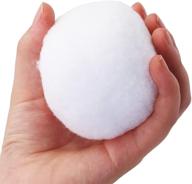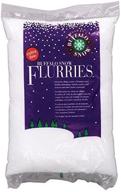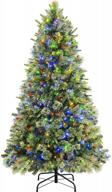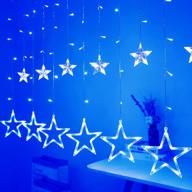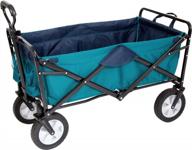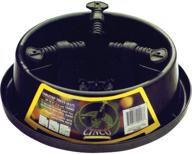Another interesting products


7 Review

Choosing the Right Christmas Tree for Your Home
Picking out the perfect Christmas tree for your space is an exciting holiday tradition. With some planning and preparation, you can find a tree that matches your decor and fits nicely in your home.
Top products in 🍃 Trees


27 Review



29 Review

Live vs. Artificial Christmas Trees
One of the first decisions to make is whether you want a live or artificial tree. Here's a quick comparison:
- Live trees offer that fresh pine scent and the fun of picking one out at a tree farm or lot. However, they require more maintenance to keep them watered and safe.
- Artificial trees are reusable for many years. They don't require watering or shed needles. But they don't have that true fir smell.
Height and Fullness
Measure where you plan to place the tree and leave additional space for the tree topper when deciding on height. Also consider the fullness or width of the tree:
| Tree Size | Best For |
|---|---|
| Slim tree (width under 3 feet) | Small spaces, corner placement |
| Normal fullness (3-5 foot width) | Most living rooms |
| Extra-full tree (over 5 feet wide) | Large open areas |
Matching Your Decor Style
Your tree should complement your existing decor. Some things to look for:
- Flocked trees: Have artificial snow sprayed on branches. Good for a sparkly, classic look.
- Unflocked trees: The traditional green. Provide a canvas to decorate.
- Themed trees: Come in colors like pink, silver, or blue. Fun for kids' rooms or whimsical spaces.
Similar products
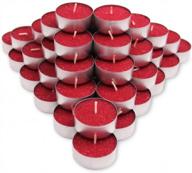

40 Review

Safety Tips
Whichever tree you choose, be sure to follow these guidelines to keep it safe:
- Place away from heat sources like fireplaces or vents.
- Don't block doorways or high-traffic areas.
- Keep your live tree well-watered.
- Check light cords for damage before decorating.
- Turn off tree lights when leaving the house.
With a little forethought, you can pick out a Christmas tree that perfectly matches your home and holiday style.
Live vs. Artificial Christmas Trees: Which is Better for You?
One of the classic debates around the holidays is whether to get a real live Christmas tree or an artificial one. Both options have their pros and cons.
Cost Comparison
Artificial trees often have a higher upfront cost, with prices starting around $100 for a 6-foot tree and going up to over $1,000 for a gigantic 12-foot tree with lights. However, you can use an artificial tree for 5-10 years or more, saving money in the long run.
Live trees can range from $50-150 on average depending on the size, type, and your location. You'll need to buy a new live tree every year.
Convenience
Artificial trees are extremely convenient. You can set them up in minutes without any mess. Many come with the lights already strung.
Live trees require more effort. You'll need to:
- Make a trip to pick out and transport the tree home
- Keep it watered daily
- Clean up dropped needles
So artificial trees win in terms of convenience.
Experience
Going to a tree farm or lot and picking out your live tree is nostalgic holiday fun for many families. The fresh pine scent filling your home can't be replicated.
Artificial trees lack that true fir tree experience, but modern options look very realistic. For people with allergies, an artificial tree eliminates any issues with live tree mold or dust.
Environmental Impact
Live trees are a renewable crop grown on farms so they have low environmental impact. Artificial trees are made of plastic and metal, so they won't decompose if dumped in a landfill.
On the other hand, live trees are transported using fossil fuels. And artificial trees don't contribute to deforestation when reused over many years.
Fire Safety
Well-watered live trees are unlikely to catch fire. But dry, neglected ones can pose a serious hazard.
Artificial trees don't come with this fire risk. Just take precautions with your tree lights.
When it comes to live vs. fake, there's no definitive right choice. Pick the option that best fits your lifestyle and holiday spirit.
Picking the Perfect Height and Fullness for Your Christmas Tree
When choosing a Christmas tree for your home, two important factors to consider are the height and fullness. Measure your space carefully and think about your decor approach before making a decision.
Measuring for Height
The standard ceiling height is 8 feet. Make sure to measure the exact height of where you plan to place your tree:
- In a room with 8 foot ceilings, a 6-7 foot tree is recommended.
- With 9 foot ceilings, you can accommodate a 7-8 foot tree.
- In a room with cathedral or vaulted ceilings, you have lots of flexibility for larger trees.
Leave a few extra inches between the ceiling and treetop for your tree topper.
Considering Tree Fullness
Fullness refers to how wide or full a tree looks with all its branches. Here are some tips for choosing fullness based on room size:
| Room Size | Fullness Recommendation |
|---|---|
| Small room or corner | Slim tree under 3 feet wide |
| Medium room | Normal fullness between 3-5 feet |
| Large open concept room | Full tree over 5 feet wide |
Make sure your tree does not block walkways or cover windows. Leave enough open space to walk around and appreciate the full view.
Tree Shape
Along with fullness, consider the shape of your tree:
- Classic cone shape: Best for even decor and ornament hanging
- Asymmetrical: Provides visual interest
- Slim pencil shape: Great for corners and limited space
Ceiling Height vs. Ornaments
If you have high ceilings, consider a taller tree you can decorate from top to bottom. For standard height ceilings, focus ornaments around eye level and avoid overloading the top portion.
Take measurements and room size into account before picking out your perfect Christmas centerpiece.
Choosing a Christmas Tree to Match Your Decor Style
Your Christmas tree can either complement your existing decor or be the main focal point with decorations tailored around it. Here are some tips for matching your tree to your style.
Formal Decor Style
For a formal living room, a classic green fir or spruce tree works well. Decorate with red roses, berries, pinecones, and elegant glass ornaments in red, gold and crystal. Add a tree skirt that matches your rug.
Rustic or Farmhouse Style
A full, uneven Douglas fir tree fits a farmhouse aesthetic. Use burlap ribbon, pinecones, mini wooden sleds, and red buffalo check plaid ornaments. Lay the tree on a primitive wooden sled or tree skirt.
Modern and Minimalist
For a modern space, try a narrow frosted tree in silver or white. Opt for soft white string lights and large shimmery decorative balls. Skip the tree skirt and top with a simple silver star.
Whimsical and Eclectic
Have fun with a colorful tabletop tree decorated with character ornaments and unique touches like flower sprigs or feathers. Surround with wrapped presents in unexpected patterns and prints.
Bohemian or Global Style
A potted Norfolk Island pine suits a boho interior. Embrace texture with fair trade world ornament sets and artisan hanging medallions. Drape the tree with beaded garlands.
Wood Cabin or Lodge
In a cabin, go for a full Douglas or Fraser fir. Use solid color tartan ribbon and nature-inspired ornaments like antlers, logs, and snowflakes. Set in a large galvanized tub and surround with faux fur throws.
Take your existing decor into account for a cohesive look. But don't be afraid to use your tree to try out a new color palette or theme!
Easy Tips for Decorating Your Christmas Tree
Decking out the Christmas tree is one of the most fun parts of the holidays. Here are some easy ways to decorate your tree beautifully.
Choosing Tree Lights
Lights form the foundation for any tree:
- LED lights use less energy and last longer than incandescent.
- Aim for at least 100 bulbs for an average 6-7 foot tree.
- Mix colors for visual interest or stick to one hue.
Placing Ornaments
When hanging ornaments:
- Start by filling in ornament-free spots rather than clustering.
- Hang lightweight ornaments near the top and heavier ones closer to the base.
- For tree shapes like a classic cone, space evenly for balance. For irregular trees, decorate more heavily in fuller spots.
Ornament Styles and Themes
Some ideas for ornament schemes:
| Style | Examples |
|---|---|
| Monochromatic | All blue, silver, or red |
| Tone-on-tone | Light and dark blue shades |
| Eclectic personality | Meaningful souvenirs |
| Thematic | Snowflakes, animals, vacation spots |
Creative Ornament Locations
For an extra pop, hang ornaments in unexpected places like:
- Tucked into tree branches and gaps
- Hanging from trunk
- Displayed on table under the tree
Follow these tips for a gorgeously decorated Christmas tree!
Christmas Tree Lighting Ideas and Options
Christmas tree lights provide that magical glow and bring your decor to life. Consider these lighting ideas and options for your tree.
Types of Christmas Tree Lights
- Incandescent: The classic lights with a warm, cozy feel. Higher energy use and risk of hot bulbs.
- LED: Energy efficient and cool running. Come in a variety of colors. More expensive initially.
- Mini lights: Smaller bulbs on thinner wires, allow for more intricate patterns.
Ways to Use Lights
Some creative ways to light your tree:
- Wrap strands tightly around interior branches for a solid glow.
- Alternate colors in patterns like red-green-blue-repeat.
- Outline just the outer shape for a subtle look.
- Crisscross lights from trunk to branch tips.
Fun Lighting Effects
Specialty lighting creates dazzling displays:
- Twinkle lights: Mimic flickering candles.
- Icicle lights: Drip down like icicles for outdoor trees.
- Projectors: Cast tree, snowflake, or Santa shapes from a bulb.
- Ornament lights: Outline ornaments for emphasis.
Lighting Tips
Follow these guidelines for lighting success:
- For a typical 6-7 foot tree, aim for around 100 bulbs total.
- Test all lights before decorating - replace any burnt out strands.
- Link no more than 3 light strand extensions together.
- Consider battery pack lights to avoid outlet overloads.
Choose lighting that reflects your tree's style and brings holiday magic.
Ornament Styles and Themes for Decorating Your Christmas Tree
Ornaments are the jewels that make your Christmas tree sparkle. Consider these popular ornament styles and themes when decking your tree.
Ornament Styles
- Globe ornaments: Timeless spheres made of glass, wood, or other materials. Available in every color.
- Figurine ornaments: Whimsical characters like nutcrackers, snowmen, and angels. Often handpainted.
- Iconic ornaments: Santa Claus, reindeer, Christmas trees, snowflakes. Classic holiday symbols.
- Statement ornaments: Large, flashy, or heavily decorated tree focal points.
Ornament Themes
Some fun ornament themes include:
- Winter wonderland: Snowflakes, snowmen, penguins, polar bears
- Gingerbread: Gingerbread people, candy, sprinkles
- Toy shop: Soldiers, nutcrackers, teddy bears, toy trucks
- Nature: Birds, woodland animals, pinecones, flowers
Matching Ornament Styles
| Tree Style | Best Ornament Matches |
|---|---|
| Classic green tree | Red, silver, gold |
| Whimsical tree | Characters, bright colors |
| Modern minimalist tree | Solid colors, few large statement ornaments |
The sky's the limit when picking fun motifs that reflect your interests or family traditions!
"7 Creative Ways To Decorate With Trees For The Holidays"
Here are 7 creative ways to decorate with trees for the holidays:
- Create a winter wonderland by decorating a tree with white lights and snowflake ornaments.
- Use a small tree as a centerpiece and decorate it with miniature ornaments and garland.
- Hang ornaments from tree branches using ribbon or fishing line to create a unique and festive display.
- Use a tree as a backdrop for a holiday photo booth and decorate it with props and lights.
- Create a rustic look by decorating a tree with natural elements like pinecones, berries, and burlap ribbon.
- Use a tree as a canvas for a DIY project by painting it with holiday-themed designs or patterns.
- Create a cozy atmosphere by decorating a tree with warm-colored lights and soft, plush ornaments.
What Are The Benefits Of Using An Outline When Writing??
Using an outline when writing has several benefits, including:
- Greater focus on the main topic and avoiding drifting into unrelated topics.
- Smoother transitions between paragraphs and a more optimal order of content.
- More concise writing and improved organization.
- Structuring the paper and organizing ideas in a sequential manner and thoughtful flow.
- Helping to create a writing plan and testing which ideas work well together.
- Moving information around, seeing gaps in logic, and experimenting before committing to a full draft.
- Staying on track and preventing meandering aimlessly on the page and confusing readers.
Overall, an outline helps writers remain focused, organized, and efficient in their writing process.






